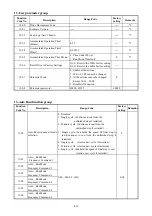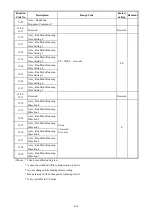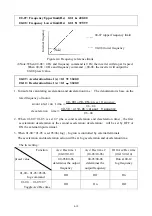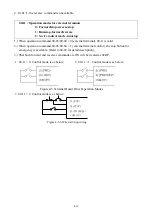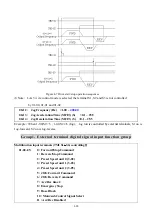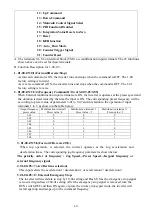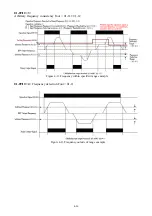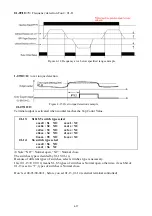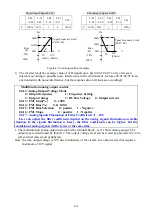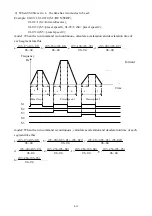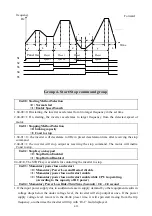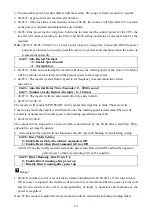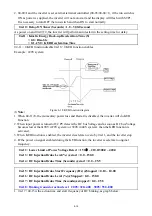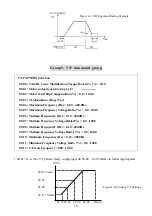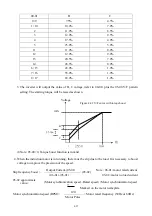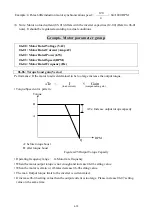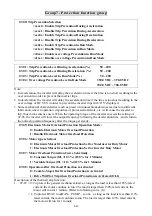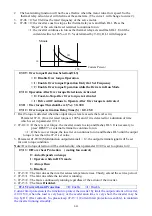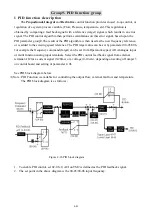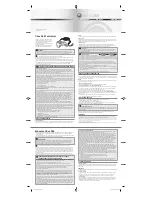
4-29
The setting of figure 4-18C : The setting of figure 4-18D :
2-02
/2-08
2-03
/2-09
2-04
/2-10
2-05
/2-11
2-09
2-02
/2-08
2-03
/2-09
2-04
/2-10
2-05
/2-11
2-09
E 100% 20% 1
0
100%
F 100% 50%
1
1
100%
1)
The inverter reads the average value of A/D signals once per (02-01/02-07 x 4ms). Set scan
intervals according to possible noise interference in the environment. Increase 02-01/02-07 in an
environment with noise interference, but the response time will increase accordingly.
Multifunction analog output control
02-12 :Analog Output Voltage Mode
0 : Output frequency 1 : Frequency Setting
2 : Output voltage
3 : DC Bus Voltage 4 : Output current
02-13 : FM+ Gain(%) 0 ~ 1000
02-14 : FM+ Bias(%) 0 .0~ 100.0
02-15 : FM+ Bias Selection 0 : positive 1 : Negative
02-16 : FM+ Slope
0 : positive 1 : Negative
02-17 : Analog Signals Fluctuation of Filter Coefficients =1 ~ 100
User can adjust the filter coefficients depend on the analog signals fluctuation on stable
situation. If the signals fluctuation is heavy, the filter coefficients can be higher, but the
resolution of analog signals will be lower at the same time.
1. The multifunction analog output terminal of the terminal block , is 0~10Vdc analog output. The
output type is determined by the02-12. The output voltage level can be scaled by parameter 02-13 to
suit external meters and peripherals.
Note: the max output voltage is 10V due to hardware of the circuit. Use only devices that require a
maximum of 10V signal.
Upper Frequency Limit
(00-07=60)
Upper Frequency Limit
(00-07=60)
Hz
V
60Hz
30Hz
0Hz
E
2V
(4mA)
10V
(20mA)
Bias
0%
-50%
-100%
Hz
V
60Hz
30Hz
0Hz
F
5V 10V
(20mA)
Bias
-0%
-50%
-100%
Figure 4-16 Analog scaling examples

